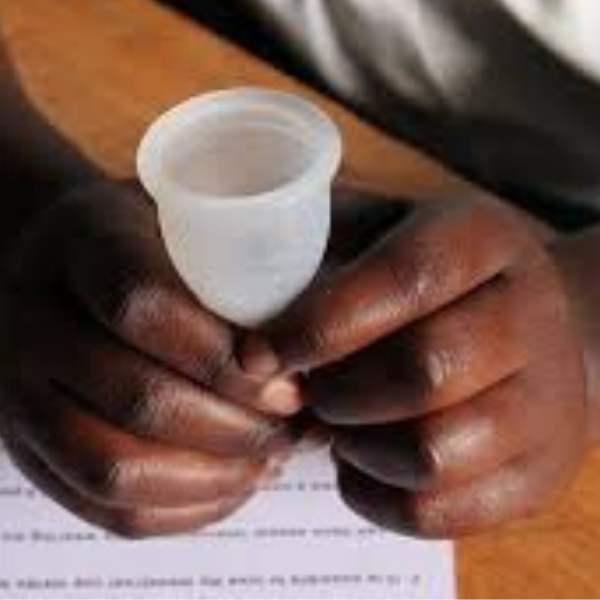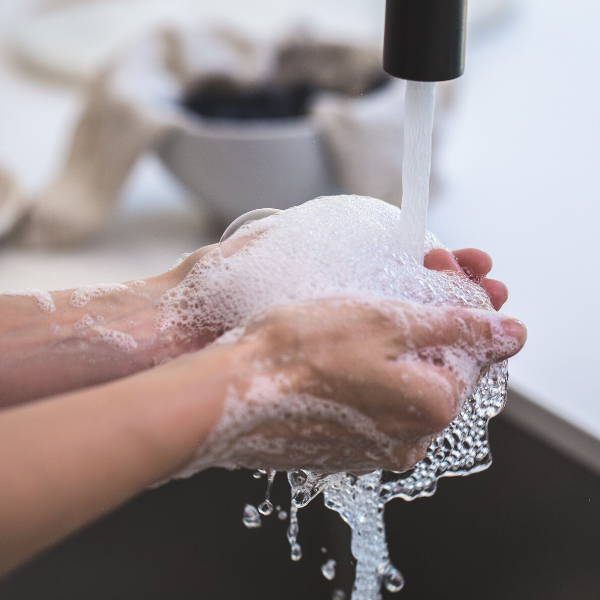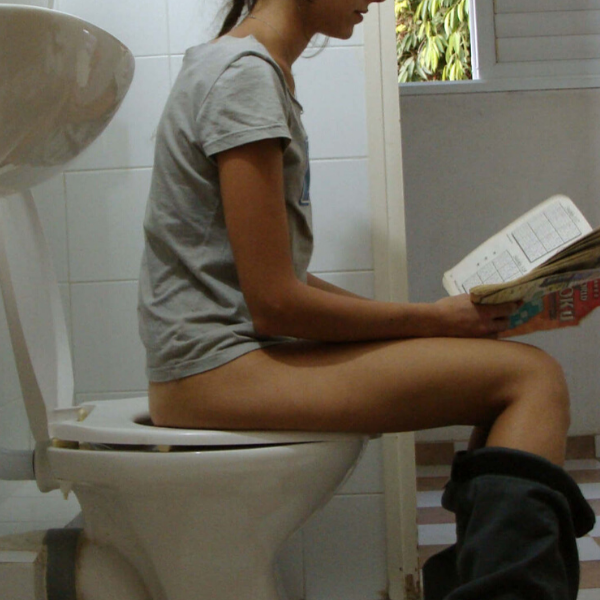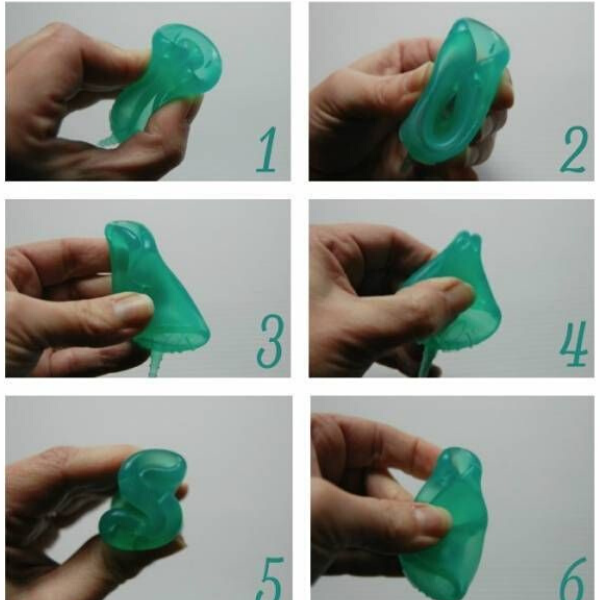Have you ever heard of period pollution? We hear a lot about plastic pollution, the devastating effect of the fashion industry on the environment, and the unsustainable damage that single-use wipes have to marine life, but what about sanitary pads and tampons?
According to a study published on the scientific magazine Lancet, the number of menstruating women in 2017 was estimated at 1.9 billion women all around the globe. This accounts for around 26% of the population, and achieve an average of 65 menstruating days per woman.
This has various and varied implications, from period poverty to discrimination, from psychological issues to environmental damage.
When we talk about periods, the first thing we should all agree is that it is a natural body function and reproductive health. It is a completely normal experience of a woman’s life and it needs to be disassociated from guilt, embarrassment or stigma once and for all. There are still women all around the world who experience menstruation can affect girls' experience and attendance during school years, especially due to lack of sanitation of disposal facilities, and in the worst cases can also make them a target to sexual violence.
Women globally also report how periods can negatively affect their work and employment situation, so this should definitely be something we need to be aware of and tackle as a culture.
Alongside this, there is also a terrifying environmental concern, as period management on a global scale is mainly tackled by promoting single-use, disposable products. If this seems like a real necessity in areas of the world that lack water and present risks of infection due to unhygienic conditions, it also isn’t justifiable in richer, more developed countries that have the means and the educational possibility of offering more sustainable and eco-friendly alternatives.
Unfortunately, period cups are still not a mainstream proposed solution to the so-called “period pollution” issues and are not getting a lot of attention still as a widely encouraged menstruating solution.
This is due to various reasons:
- Many women are very wary of using products that require to be inserted internally; this is due to cultural, religious or psychological concerns or preconceptions that are not easy to dismantle
- There are also concerns that originated from other products’ side effects, specifically highly absorbent tampons that were said to cause serious health issues such as toxic-shock syndrome
- General misinformation regarding safety, comfort and especially leakage can also be added to the list of probable causes of resistance from many women to even try out menstrual cups
The solution? Information based on evidence and demonstrable statistics, so let’s have a look together at what a period cup is, its safety, how to use it, what the best menstrual cup is and whether it can be suitable for anybody.
1. WHAT ARE MENSTRUAL CUPS
Menstrual reusable cups are receptacles made with medical-grade silicone in the shape of a bell, that is designed to be inserted vaginally for the purpose of collecting blood during menstruation.
- WHAT SIZE PERIOD CUP SHOULD I CHOOSE?
They are usually available in different sizes:
- Smaller ones are recommended for younger women or teenagers, this is because in the early years of a menstruating woman, the vaginal muscles and hymen are tighter, therefore a smaller cup is usually a lot easier to insert.
- Larger sizes for older women or those who have already given birth to a baby, as pelvic floor muscles may become weaker during and after childbirth, needing a wider circumference to make sure there is no leakage and all the blood is securely collected in the receptacle.
- ARE MENSTRUAL CUPS SAFE?
Much of the resistance that people have towards menstrual cups is generated by general misconceptions regarding their safety. As they need to be inserted vaginally in the same way as tampons, a while back it was reported that they could generate infections, allergic reactions or serious health hazards such as toxic shock syndrome (TSS), which is an infection that sometimes develops after prolonged use of tampons.
The truth is, like everything else, it does come with possible side effects for a very small portion of users, but this has also been noticed in conjunction with improper use of menstrual cups, unhygienic habits while using it or even just keeping them for too long without emptying them.
Here are basic facts that anybody using a menstrual cup should keep in mind:
- Usually, cups need to be changed and rinsed every 4-12 hours. Maintaining them in use without emptying them for longer than that can increase the risk of infection
- Before inserting a cup, it is essential to make sure both the product and hands are thoroughly clean to avoid bacteria
- The best way to make sure your cup is used hygienically is to make sure and rinse the blood with fresh water every time it is emptied (max every 12 hours but I would recommend never keep it for longer than 6-8 hours max). In case of freshwater not being available, bottled water or boiled water may be used to avoid contamination.
- DO MENSTRUAL CUPS CUPS CAUSE LEAKAGE?
We have looked at many studies and most of them report that the issue of leakage related to menstrual cups boils down to 2 issues:
- The cup has not been properly inserted: lots of women do not place the menstrual cup correctly. This could mean it hasn’t be placed deep enough or it is still folded/the seal hasn’t been released appropriately
- The cup is not the right size for the cervix/age/sexual maturity of the person wearing it.
Once these 2 conditions are met correctly, the eventuality of leakage has been tested in very limited cases and it is usually reduced to the first day or two of the cycle, so an easy solution is to also protect your underwear with a reusable panty liner.
HOW TO USE A PERIOD CUP - and how do menstrual cups work?

So here we are, to the nitty-gritty of how to use a period cup! I hear so many people struggling with this, and giving up after just a few attempts at using them.
My main advice when it comes to using this period product is to RELAX AND HAVE PATIENCE.
But let’s start from the beginning!
- Make sure you purchase a quality reusable menstrual cup.
I would recommend always buying a good quality product. There are a lot of cheaper sanitary cups available on Amazon or other cheap online shops, the risk of using these products is that the material used may not be medical-grade silicone or may not have been tested for safety, so make sure to get your menstrual cup
- What to do before using your sanitary cup
The first step before even attempting to use one is to make sure it is properly clean and ready to be inserted. The best way to ensure good hygiene is to boil your menstrual cup in a pot full of water and making sure it does not stick to the bottom (to avoid the risk of melting it in direct contact with a heat source), boil it for 5-10 minutes depending on the brand.
This will kill bacteria and sterilise your cup; for this reason, it is also a recommended step between cycles, to get rid of bad odours, discolouration and germs.
- How to insert your menstrual cup
So here it is, the step that everyone seems to struggle the most with. I have been using my reusable period cup for over 4 years now, and I always tell my friends that once you get used to it, you never look back! And most of them got on board with my idea, and share the exact same view. However, I nearly gave up at the beginning because the first attempts at using it were not very successful, due to leakage and discomfort when inserted.
Like many others, I just blamed the cup, thinking “ This is not for me, not good for my body”. Luckily I decided to do some more research before throwing the towel for good, and thank goodness I did! Because of all the issues I was experiencing had nothing to do with my body or cervix shape, and everything to do with the way I was positioning the cup.
So let’s have a step by step look at best practises and how to use your menstrual cup:
- First things first: wash your hands carefully with soap and water before trying to insert your cup, and rinse well. Hygienic precautions are the best way to avoid infections, so do not take this step lightly!

2. Relax! This is often an underestimated step but in my opinion, it is the most important one. In order to insert the menstrual cup correctly and properly, and hence avoid any kind of discomfort or even risk of leaking, the more relaxed you will be, the easier the application will be. I personally like applying it while sitting on the toilet, but you could also squat down or even lift a leg on a chair while doing it. I still recommend sitting on the toilet as it will help relax your pelvic muscles. Breathing deeply will also help insertion. 
3. If you are starting out, using some lubricant can make insertion at the beginning a lot easier. I never used it but I know of a lot of people who found it beneficial while getting used to it. Either way, fold the menstrual cup. There are many ways to fold it, I personally find that the easiest and fuss-freer is what is called a U-Fold: Press the sides of your cup between your finger and fold it in half in a U shape, just like shown in the photo.

Some people prefer folding the cup in a different way, here are some other methods you can try, the most important thing is for you to find what works best, so give a few of these a go before you settle on your favourite folding technique!

4. Once you have found a good position and your ideal cup folding method, use your other hand to gently separate your labia, then insert the folded cup into your vagina while still holding the fold with your thumb and forefingers. Don’t worry about pushing it too deep, you will know when it reaches your cervix, but as a rule of thumb I’d say go s deep as the length of your fingers will allow.

5. Let go of the cup. Now you need to make sure it is rightly positioned and the seal has popped correctly. To do so I recommend using your thumb and two forefingers to pinch the cup and release it until it feels properly open in a bell shape. I also gently swipe my index finger around the edge to make sure the seal is adhering to the walls of your vagina. If it is not properly positioned, release the suction by pinching the cup with your 3 fingers and rotate it until it fits into place. Rotating will secure the seal and avoid any leakage.

6. There you go! You are done, you are ready to start enjoying your day and forget about it for the next 4-8 hours (depending on how heavy your flow is, or how far along your cycle you are). Make sure you empty your cup every 12 hours at the most to avoid any risk of infection.
HOW TO EMPTY AND REMOVE THE CUP
- Again, after washing your hands carefully, remember that relaxing and sitting on squatting will help to remove your cup once it needs to be emptied or put away. Breath and reach inside the vagina with your fingers, once you reach the stem of the cup, you can reach the base of the cup. Pinch the cup to release the seal, and pull the cup out at a sideways angle.
- Empty menstrual blood into the toilet and rinse carefully with running freshwater before reinstating the cup. If you are at the end of your cycle, I’d recommend using very warm water and soap to wash your cup before storing it away until next month!
FAQ – Everything you have always wanted to ask about menstrual cups.
-
Are menstrual cups suitable for teenage girls?
Yes, once they have started menstruating. We recommend a smaller size as the pelvic floor is not as stretched as for older women, this cup is perfect for any girl after they have had their first period.
-
Can I have sex while wearing a menstrual cup?
Penetrative sex while wearing a menstrual cup is not possible. Should you wish to have intercourse, simply remove the menstrual cup.
-
What if I cannot remove my menstrual cup once inserted?
We have heard of some women who struggled to remove their menstrual cup once being pushed inside the vagina, however, this is usually because they get scared of introducing their fingers inside the canal or fail to release the seal properly. Fear is the worst thing when trying to remove your cup! The best way to do it is to sit comfortably on a toilet, pull the stem of the cup and then gently pinch the cup in the middle or close to the edges with your finger. While holding the cup like that, just push it out. Breathing will relax your pelvic muscles and help the cup slide downwards.
I hope all this info will help you embrace your menstrual cup and turn the tide on period pollution! If you have any other question, just let me know and I will be happy to help out!









Leave a comment (all fields required)